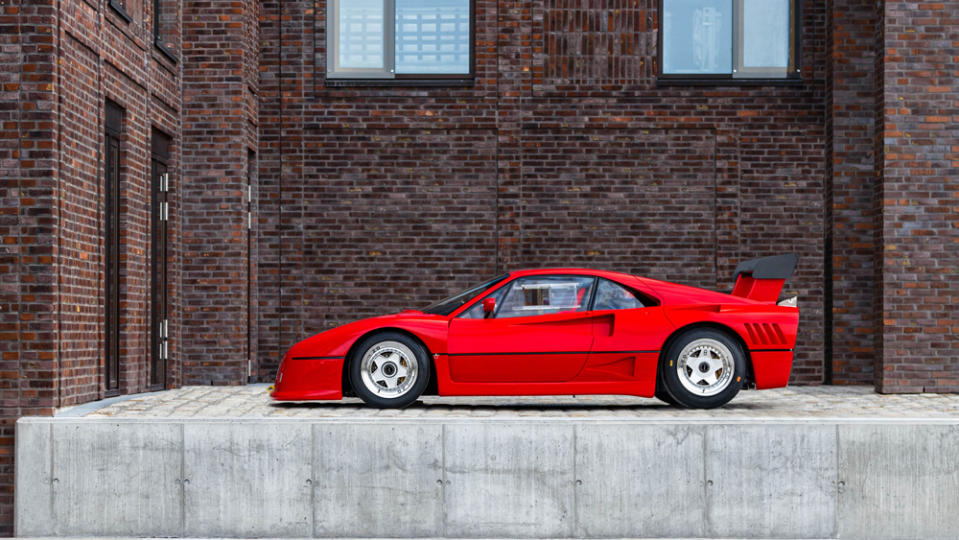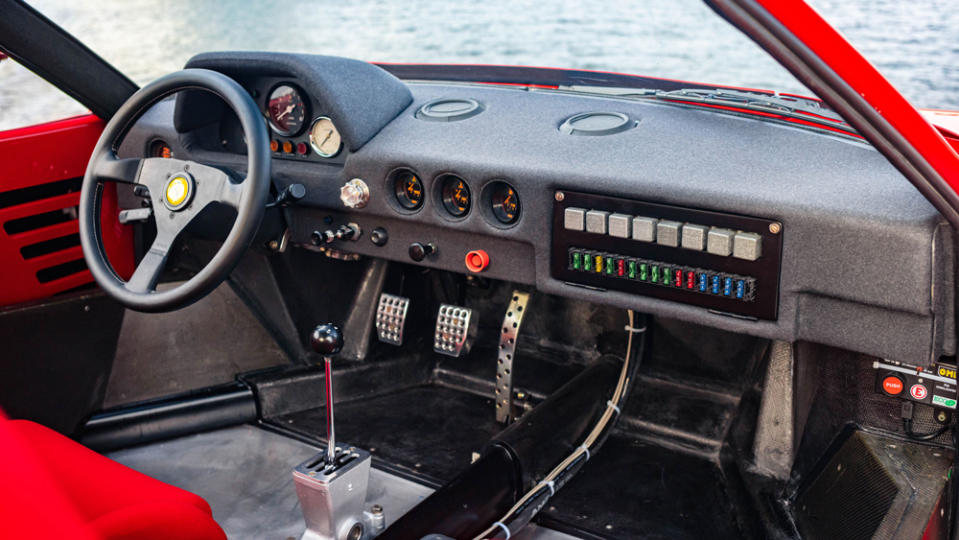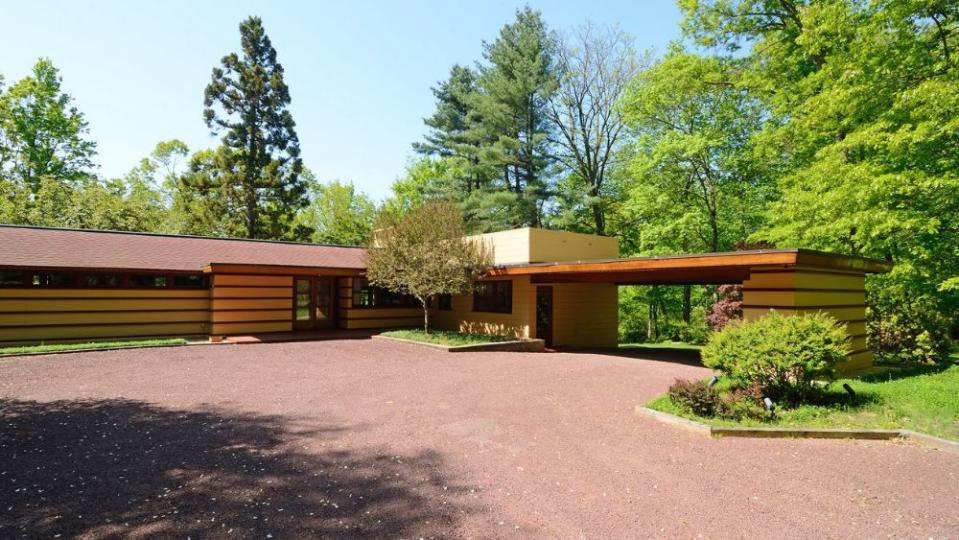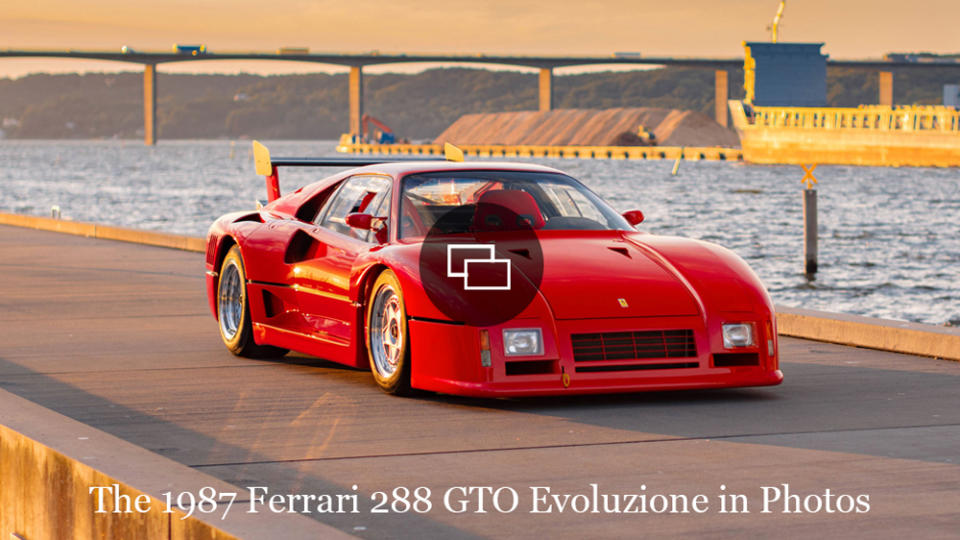Car of the Week: One of the Rarest Competition Ferraris Ever Built Heads to Auction

- Oops!Something went wrong.Please try again later.
This rare Prancing Horse represents the most extreme iteration of Ferrari’s 288 GTO platform, making it the ultimate performance version of what many consider Ferrari’s original supercar. It was also the last GT racing car built with direct input from Enzo Ferrari, who died in 1988. Before examining what makes the 288 GTO Evoluzione special, it’s important to set the stage and understand how the 288 GTO came to be.
The short-lived Group B international racing series was all the rage from its introduction in 1982 through 1986, with many manufacturers developing cars expressly for the purpose of winning the World Rally Championship. The series was made up of four classes, each based on parameters such as displacement, weight and wheel width, with rules that exercised few restrictions on technology, design or materials. Competing in the series required a manufacturer to homologate at least 200 units, which means that today, there are many examples for collectors interested in owning these high-strung racers.
More from Robb Report
The Dirty, Difficult Truth About the Vaunted Mille Miglia Car Race
Car of the Week: This Stunning 1967 Corvette Convertible Restomod Is About to Hit the Auction Block

Group B afforded a blank canvas for marques like Audi, BMW, Ford, Lancia, Peugeot, Porsche and Renault, and Ferrari jumped into the fray in June of 1985. Unfortunately, the speed and unbridled power of these rally cars, combined with a string of accidents, resulted in the FIA shutting down the series altogether in 1986. Nonetheless, it was a fertile era for manufacturers, and Ferrari’s 288 GTO remained in production a bit longer.
Today, collectors regard the 288 GTO, of which 272 were produced between 1984 and 1987, as one of the most desirable and certainly most beautiful Group B cars ever developed. Sharing an outward appearance with Ferrari’s Pininfarina-designed road car, the 308 GTB, the 288 GTO is an altogether different beast under the skin. With an eye on technological advances, the FIA permitted automakers to build a minimum number of 20 “Evolution” models per year, from which the Ferrari 288 GTO Evoluzione derived.

Pininfarina’s revised bodywork comprised Kevlar and fiberglass to reduce weight, while also including a carbon-fiber rear wing. The longitudinally mounted, 2.9-liter twin-turbocharged V-8 used larger turbos and revised tuning to make an impressive 650 bhp, a sizable jump from the 394 bhp of the road-going 288 GTO.
Weighing less than 2,100 pounds, the Evoluzione achieves a top speed of nearly 230 mph. Unfortunately, only five of these ultimate competition versions had been built before production ceased. Despite the untimely demise of the Group B series, Ferrari’s 288 GTO nonetheless played a role in the development of its successor, the F40, built from 1987 through 1992. Between them lies the 288 GTO Evoluzione, a car that RM Sotheby’s refers to as “the missing link for many Ferrari collectors.”

Chassis No. ZFFPX16X0J0079888 is the fourth of the five examples of the 288 GTO Evoluzione constructed. It was sold through Jacques Swaters’ Garage Francorchamps of Belgium to Belgian racing driver and businessman Jean Blaton, who competed in the 24 Hours of Le Mans a total of 15 times from the 1950s through 1970s. In 11 of those contests, Blaton piloted Ferrari racers, including the 250 Testa Rossa, 250 LM, 250 GTO and 330 P4, so his acquiring the 288 GTO Evoluzione was only natural.
By 1992, the car had returned to Jacques Swaters, who kept it until 2006. Subsequently, the vehicle went through a few owners, selling to its current European consignor in 2019. With Ferrari Classiche certification, the example retains its original engine and gearbox. According to the consignor, a recent full servicing and refurbishment has been carried out by the engineering specialists at Michelotto, the Italian motorsport outfit involved in the initial development and modification of the Evoluzione model variant.

Work included the necessary replacement of certain components, such as the tires, and an overhaul of the clutch, gearbox, suspension, brakes, water pump and turbos. The exterior was fully repainted in the original Rosso Corsa, while interior restoration included a new dashboard and seat covers, seat belts, door windows and glass for the rearview mirror.
This rare car will be offered through RM Sotheby’s, via its sealed-bid platform, from October 19 through 21. With values of the 288 GTO hovering as high as $4 million, it’s anyone’s guess what it will take to acquire this extreme iteration, one of the most radical racers of the 1980s and among the rarest competition Ferraris ever built.
Click here to see more photos of this 1987 Ferrari 288 GTO Evoluzione.

Best of Robb Report
The Chevy C8 Corvette: Everything We Know About the Powerful Mid-Engine Beast
The 15 Best Travel Trailers for Every Kind of Road-Trip Adventure
Sign up for Robb Report's Newsletter. For the latest news, follow us on Facebook, Twitter, and Instagram.

